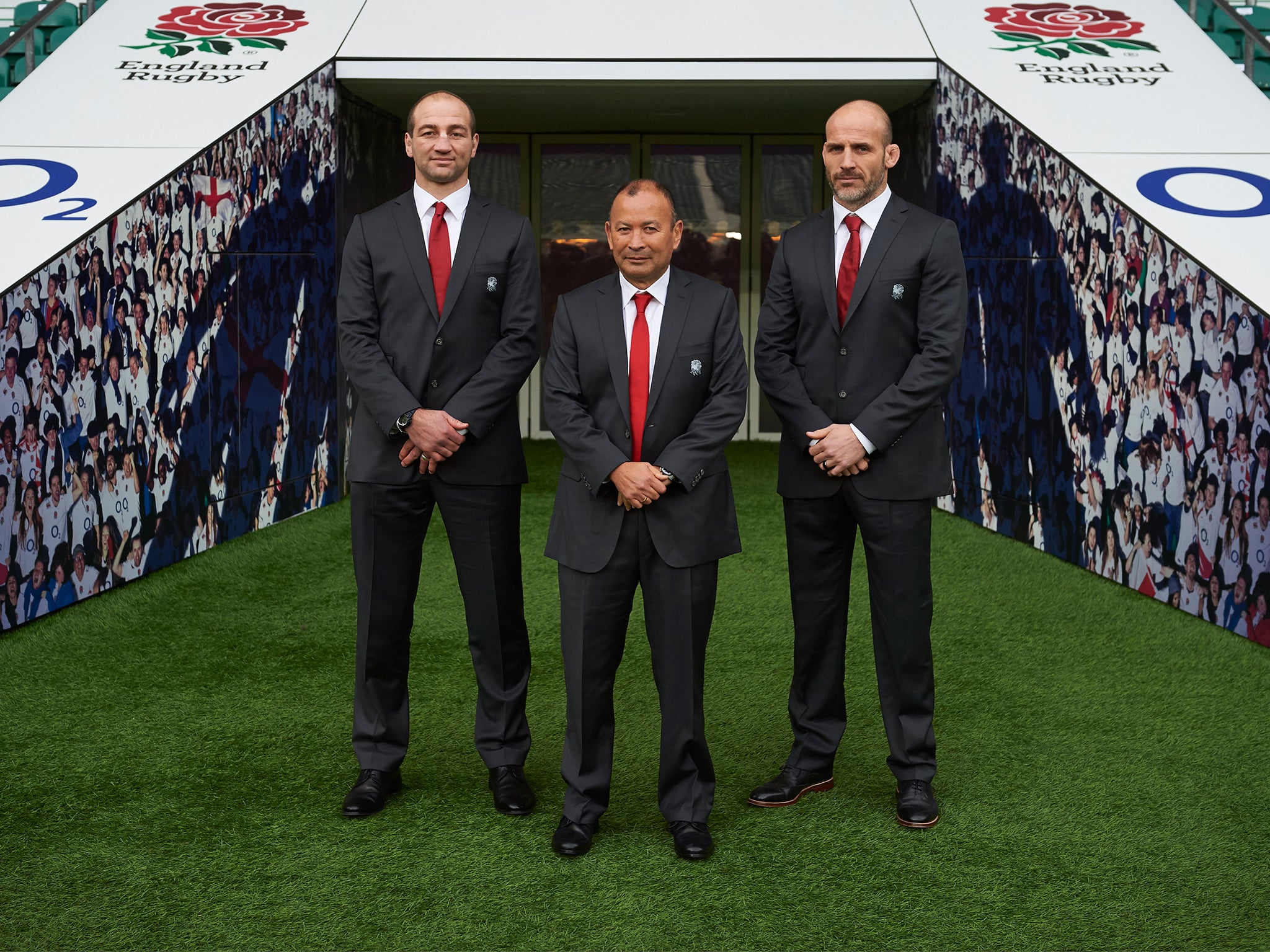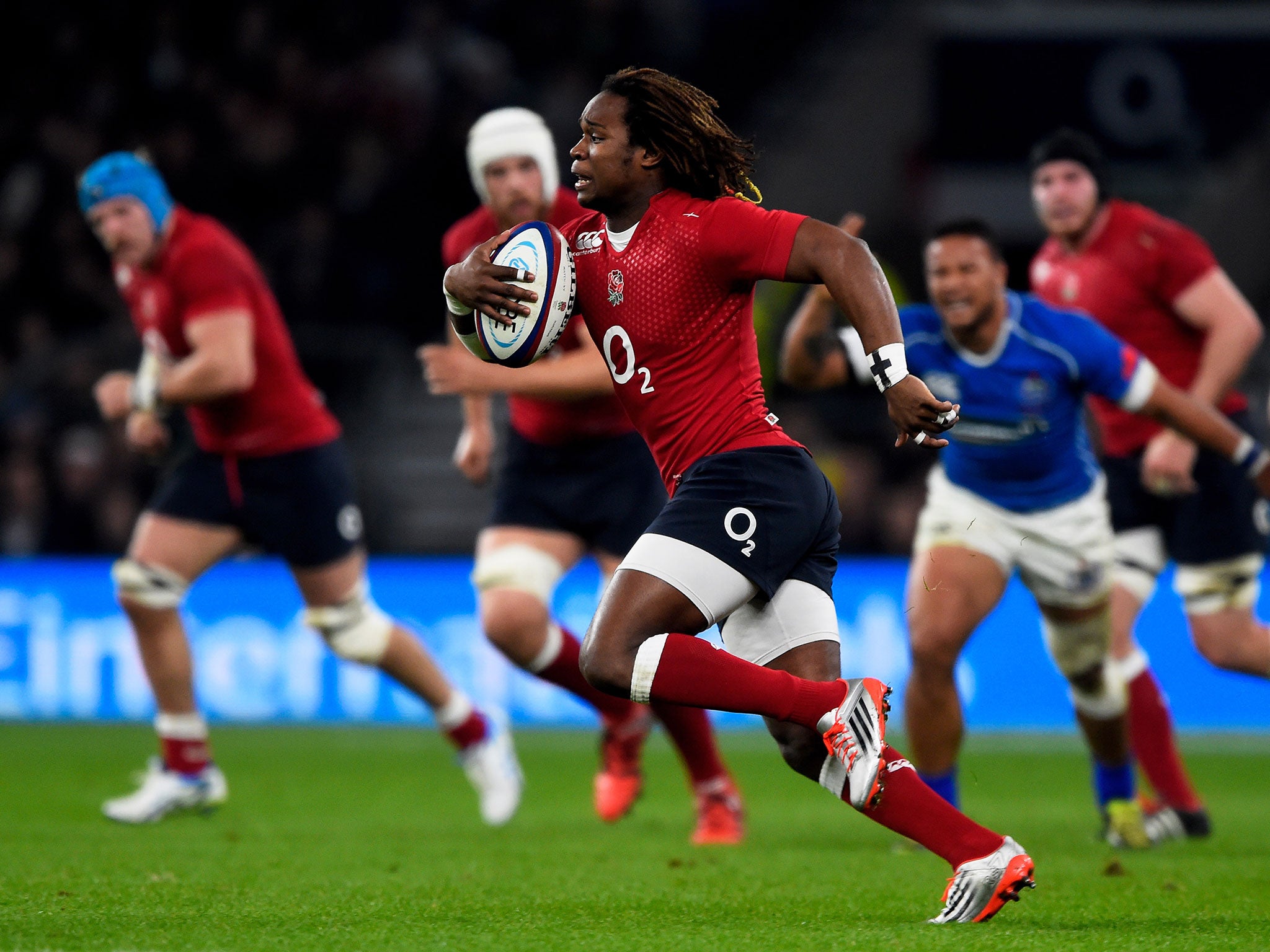What will Eddie Jones’ first England XV look like?
New England coach’s squad includes seven newcomers but their chance to shine will probably have to wait until after the Six Nations opener in Edinburgh

Your support helps us to tell the story
From reproductive rights to climate change to Big Tech, The Independent is on the ground when the story is developing. Whether it's investigating the financials of Elon Musk's pro-Trump PAC or producing our latest documentary, 'The A Word', which shines a light on the American women fighting for reproductive rights, we know how important it is to parse out the facts from the messaging.
At such a critical moment in US history, we need reporters on the ground. Your donation allows us to keep sending journalists to speak to both sides of the story.
The Independent is trusted by Americans across the entire political spectrum. And unlike many other quality news outlets, we choose not to lock Americans out of our reporting and analysis with paywalls. We believe quality journalism should be available to everyone, paid for by those who can afford it.
Your support makes all the difference.Eddie Jones is a cricket nut who can tell a silly point from a silly mid-off as easily as he distinguishes between a natural blind-side flanker and a dyed-in-the-wool breakaway, so he was completely in his comfort zone as he explained why he might play safe with his team selection when England travel to Murrayfield for the Calcutta Cup match with Scotland three weeks today.
“I always think about when Australia played Test cricket against the West Indies when they had those four pace bowlers and were seriously good,” said the Tasmanian, an hour or so after marking his first piece of serious business as England head coach by naming seven uncapped players in his Six Nations squad. “You wouldn’t want to ask a new batsman to face those quicks on a really fast pitch like Perth, would you? In the same way, Murrayfield will be tough. If we’re going to give people a debut, it’s more likely to be against Italy in the second game.”
It was difficult to argue. Jones’s predecessor as red-rose boss, Stuart Lancaster, fielded a deeply unfamiliar team against the Scots in his first match in charge – and in Edinburgh too – but many of those newcomers had been peregrinating around the Premiership block for some time and had the scars to prove it.
And besides, that Scotland side was far weaker than the one England will confront next month. Not only did the current vintage find a way out of their pool at last year’s World Cup, they would have made the last four but for a refereeing meltdown at the wrong moment.
But it will be a new-look England side nonetheless, for the very good reason that six of the players who came up short against the Wallabies in early October and bade farewell to their own global tournament as a consequence are out of the running for Murrayfield.
Jonny May, the Gloucester wing, is injured. The others – Brad Barritt, Tom Youngs, Geoff Parling, Tom Wood and Ben Morgan – have been dropped. Not simply from the team, but from the elite squad.
The fascination surrounds the evolution of the starting line-up over the stretch of the tournament – five games, three of them away from home, in which the likes of Elliot Daly, Paul Hill, Maro Itoje, Jack Clifford and Josh Beaumont are sure to challenge the established order, such as it is. There may even be an opening for Sam Hill or Ollie Devoto, the young midfielders called in for the injured Henry Slade and the not-so-injured but not-quite-fit Manu Tuilagi.
If, by the time England travel to Paris for the championship finale in mid-March, a Hill or a Clifford has nailed a place in the run-on combination, Jones will be well satisfied. He has half an eye, at least, on the 2019 World Cup in Japan and as he has said with great frequency in the past, title-winning teams have at least 600 caps’ worth of know-how. It starts here.
Back three
Mike Brown’s bulldog spirit was sorely missed when England lost in Dublin a year or so ago and as the Harlequin was the least of the red-rose issues at the World Cup, he is favourite to continue at full-back ahead of the infinitely more sophisticated Alex Goode of Saracens. Twelve months from now, Anthony Watson may be wearing the No 15 shirt – Jones believes he has serious potential in the position – but for now, the Bath man is being considered as a wing.
The wide positions are among the most competitive: Chris Ashton’s return underlines the coach’s love of a natural-born finisher; Jack Nowell’s up-and-at-’em workaholism should make him equally appealing, given all the talk about blood, sweat and attitude; Marland Yarde has rediscovered some momentum and seen his valuation rise as a result. Watson and Nowell may get the nod for Murrayfield, but all four are in with a shout.

Centres
If Jones is waiting for Manu Tuilagi to regain full fitness after a 14-month hiatus, he is using the spare time to plot a change of position for the human bowling ball, having convinced himself that he might have a red-rose Ma’a Nonu on his hands. Yet there have been precious few public confirmations that Tuilagi possesses the passing, kicking and decision-making capacity to cope with the demands of the inside-centre role and we can only hope and pray that when pressed on this issue, the coach does not fall back on the old “you should see him in training” line. We heard enough of that nonsense when Sam Burgess was in town.
Jones is also tempted by the idea of Henry Slade at No 12, but as the Exeter youngster is badly crocked, a potent partnership with the HBB (operating at outside centre) is not for the here and now. As Tuilagi is unlikely to be ready for an international return until the meeting with Wales in March, there must be every chance that Owen Farrell and Jonathan Joseph will pair up at Murrayfield.
Half-backs
In the longer term, Slade could press a claim at outside-half as well as inside-centre. Jones certainly sees him as a highly selectable inside back of one kind or another: a “five-eighth” player, as the All Blacks would say. For now, George Ford of Bath appears to have first dibs at No 10, although the natural temptation to pick the most reliable goalkicker in the land will always keep Farrell in the equation.
Unusually, the coach has gone with two scrum-halves rather than three, leaving Ben Youngs and Danny Care to squabble among themselves. Youngs is the more rounded performer, but he is prone to alarming lapses in productivity. Care was not given much of a show at the World Cup and is performing with righteous anger. It will be a very close call.
Front row
This should be simple to begin with: Mako Vunipola is the form loose-head prop in England, so that’s sorted; Jamie George is the form hooker in England, so ditto – especially as Dylan Hartley, back in class after another costly spell on the naughty step, has played so little rugby. As for the tight-head role, Dan Cole is the man with the mileage and therefore trumps the newcomer Paul Hill at this stage in proceedings. It could well be different by the end of the tournament, however, even if the injured Kieran Brookes remains hors de combat for the duration.
Second row
It is difficult to know what Courtney Lawes amounts to these days, but injuries to the likes of Dave Attwood, Ed Slater, Mitch Lees and Mike Williams counted in his favour.
Maro Itoje, the brilliant Saracens prospect, was due a call-up and received one, and while Joe Launchbury and George Kruis are currently favourites for Murrayfield duty, he won’t be left kicking his heels for long. In fact, a couple of big Euro performances for Saracens could make life very interesting indeed.
Back row
The first thing to say here is that Chris Robshaw, kicked around by all and sundry before, during and after the World Cup, has responded magnificently.
Jones may well have been right in saying that the loss of half a number from his back – a reference to the long-time captain being caught between two positional stools – has worked the oracle, but it still takes some character to deliver performances of such quality after so harrowing an experience.
If Robshaw is the likely blind-side starter and Billy Vunipola’s dynamism gives him the edge at No 8 over the worthy newcomer Josh Beaumont, the story on the open-side flank is more complicated.
Indeed, Jones is more concerned about No 7 than he is about No 12, which is saying something. The coach has three candidates in James Haskell, Matt Kvesic and the newcomer Jack Clifford, but none is “ideal” in his eyes. Clifford will push hard over the course of the championship but for the trip to Scotland, who will field an extremely useful breakaway in John Hardie, some craft and cunning will be required.
It is a delicate call... and an important one. Murrayfield is not the place to finish second at the breakdown.
Join our commenting forum
Join thought-provoking conversations, follow other Independent readers and see their replies
Comments